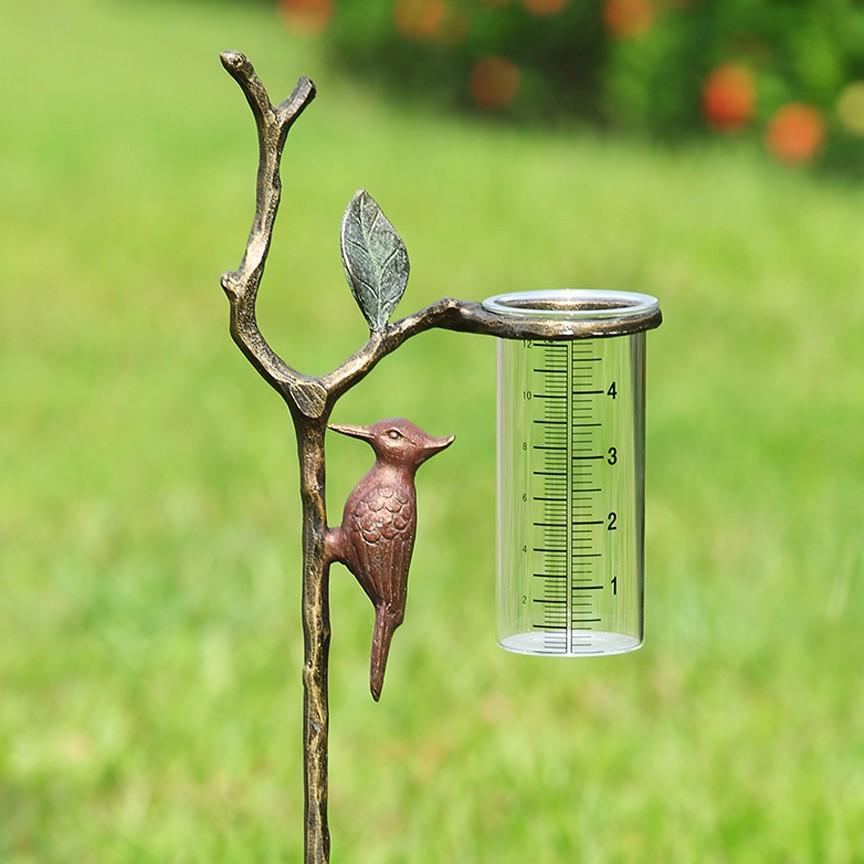Compare the Leading Rain Gauge Models for Accurate and Constant Analyses
Compare the Leading Rain Gauge Models for Accurate and Constant Analyses
Blog Article
Unveiling the Science Behind Rainfall Gauges: Exactly How These Gadgets Play an Essential Role in Climate Study and Ecological Monitoring
Rain evaluates, relatively easy gadgets, hold a profound importance in the realm of climate research and ecological surveillance. As we peel off back the layers of this clinical shroud surrounding rainfall evaluates, we discover a world where precision, data accuracy, and meticulous monitoring merge to introduce a much deeper understanding of our altering environment and its influence on the world.
Value of Rain Scales
Rain assesses play an important duty in monitoring and determining rainfall levels, offering vital data for environment research study and analysis. These tools are essential in quantifying the quantity of rainfall that takes place in a certain area over a particular duration. By collecting and measuring rain, rain determines deal valuable understandings into the circulation and intensity of rainfall, helping meteorologists, hydrologists, and climatologists in understanding climate patterns and patterns.
Among the crucial reasons why rainfall assesses are essential is their capacity to supply accurate and localized information. Unlike satellite or radar-based measurements, which supply wider monitorings, rain determines offer accurate information certain to the place where they are positioned. This localized information is important for various applications, consisting of flood projecting, dry spell monitoring, and water source management. Furthermore, long-term data accumulated from rain assesses helps in evaluating environment change effects and patterns, adding considerably to clinical study and decision-making processes. Essentially, rain gauges work as essential tools in the field of weather forecasting and environmental scientific research, playing a vital function ahead of time our understanding of weather and climate dynamics.
Kinds Of Rain Gauges

Functionality and Procedure
In the realm of climate study and atmospheric studies, the performance of rainfall assesses depend on their elaborate functionality and precise functional devices. Rain evaluates are designed to properly determine the amount of precipitation that drops over a certain area during a collection period. These devices typically include a channel that gathers rainwater and networks it into a measuring tube. The gauging tube is marked with calibrated dimensions that additional reading enable the precise metrology of rainfall.
The capability of rain determines is based on the concept of collecting and determining rain in a standardized fashion. This gathered information is important for understanding regional climate patterns, tracking long-lasting climate patterns, and analyzing environmental influences. To ensure precise dimensions, rain assesses need to be purposefully placed in open areas far from blockages such as buildings or trees that could hinder the collection process.
The operational element of rain evaluates includes routine upkeep to prevent debris build-up, calibration checks to maintain measurement precision, and data taping for evaluation (rain gauge). On the whole, the functionality and operation of rain evaluates are crucial for collecting dependable rainfall information crucial to environment study and ecological surveillance
Duty in Environment Study
Offered the critical significance of accurate precipitation measurements in understanding weather patterns and environmental impacts, the duty of rainfall determines in climate research study is important. Rain evaluates offer vital data for climate study by evaluating the quantity of precipitation that falls over a particular area throughout an offered period. This data is crucial for keeping track of long-term trends in rainfall patterns, examining the effect of climate adjustment on rainfall distribution, and boosting environment try this models.

Environment researchers make use of data accumulated from rain determines to examine variants in precipitation degrees, determine regional environment trends, and assess the efficiency of water resource administration strategies. By contrasting historic rainfall information with present measurements, scientists can detect shifts in rainfall patterns, such as changes in the regularity or strength of rainfall events. This details is important for recognizing how environment change is influencing rainfall characteristics and can help policymakers make informed choices regarding adaptation and reduction strategies.
Applications in Environmental Surveillance

In flooding forecasting, rain gauge information aids to track rains strength and distribution, enabling authorities to issue timely cautions and take essential actions to minimize flooding dangers (rain gauge). Dry spell surveillance relies upon rainfall gauge information find more information to assess moisture degrees in the dirt and track rainfall deficits, helping in the recognition of drought-prone locations and the implementation of drought response strategies
Furthermore, rain scale data plays an essential function in water resource monitoring by offering details on water schedule and use trends. This data is made use of to make educated decisions concerning water allocation, preservation measures, and lasting water resource preparation. Additionally, in farming, rain scale data helps farmers in optimizing watering schedules, plant selection, and general ranch administration techniques based on neighborhood precipitation patterns. On the whole, rain assesses are important devices in environmental surveillance, offering useful insights that contribute to educated decision-making and sustainable resource monitoring.
Conclusion
Finally, rainfall gauges are vital devices for gauging rainfall, offering useful information for environment research study and ecological monitoring. With different kinds and capabilities, rain evaluates play a critical role in understanding precipitation patterns and their effect on the setting. By properly measuring rainfall, these devices contribute to the advancement of scientific expertise and aid in making notified decisions related to water resource administration and disaster readiness.
Rain evaluates play an indispensable duty in surveillance and determining precipitation levels, giving necessary data for climate research and evaluation. The typical rainfall gauge, recognized as the "tipping container" gauge, is one of the most generally made use of gadgets. Ultrasonic rain determines use sound waves to identify the existence of rain, giving real-time data on rainfall degrees.Climate scientists use data accumulated from rainfall gauges to assess variations in precipitation degrees, determine local climate fads, and examine the effectiveness of water source administration techniques.In final thought, rainfall evaluates are vital tools for determining precipitation, providing useful information for environment research study and ecological monitoring.
Report this page